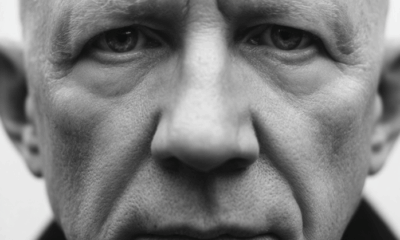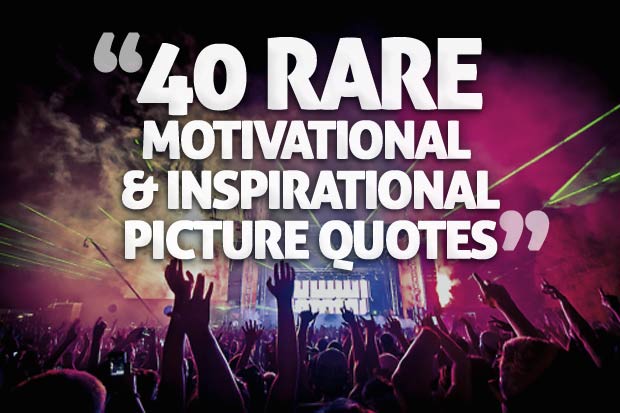Life
We Have 60,000 Thoughts Each Day: Here’s How to Generate Thoughts That Matter

This mind of ours never stops. Research shows that we humans produce some 60,000 thoughts each day. That extensive number of thoughts is an irrefutable consequence of our society’s obsessive need to be busy and distracted.
Many of our thoughts are anything but productive, and we do very little to regulate our mind’s rapacious activity. We allow our minds to be “future chasers” or “past dwellers.” They take us everywhere except for where it matters most — the present moment.
We all have the ability to become more present, awake and aware. The challenge is training our minds to stop — really stop. The mind is prone to wander out of the present but we can train it to move away from the busyness in our heads through practicing Mindfulness.
Practicing Mindfulness reins in our random thoughts and holds us in the present moment. We all have the inherent ability to utilize Mindfulness by going inward and focusing on our breath. As we stay focused on the breath, we connect to the present and are able to look more deeply into what we’re actually feeling in the moment.
Mindfulness reminds us that we’re here in this moment of “now.” It’s a state in which we’re observing our life unfold and becoming better able to experience it with clarity and acceptance. It allows us to intentionally bring our wandering mind into the present, liberates us from our emotional baggage and gives us a more balanced perspective.
With a Mindfulness approach to every moment, we find ourselves eating more slowly and really tasting our food without rushing. We make time for a leisurely walk while paying close attention to the sights, sounds and smells of nature around us. Taking the time to simply observe, we see so much more than when we’re busy thinking about what we have to do next. We open up to what resides in our hearts.
“Change your thoughts and you change your world.” – Norman Vincent Peale
Explore these ways to transcend limited thoughts and become more awake, present and aware:
1. Stop the brain’s busyness
The mind likes to be busy. It thrives on activity and distraction. It’s incumbent upon us to teach it how to become quiet and still from time to time. When we feel distracted or that we’re not fully present, we can put our focus and awareness on the breath to find stillness. Using the breath as a type of meditation allows us to connect with the wholeness that’s within. We can experience that connection when we take a walk and observe nature, or when we sit quietly savoring a cup of tea. When we’re fully present and surrender to the moment with total awareness, we experience a sense of non-separation that makes us feel whole, complete and authentically ourselves.
2. Navigate the moment with neutrality
Staying present in the moment can be challenging if we’re facing something daunting, difficult or unclear. Emotions such as anger or insecurity can make our minds race. But if we allow ourselves to open to challenging moments with acceptance, our resistance begins to dissolve. We can tell ourselves, “I can handle this moment. There’s nothing for me to fear.” We can direct the moment — meaning we can navigate it with neutrality — because we’re no longer constricting or reacting, but allowing for it to just be. Opening up to whatever challenges present themselves, instead of resisting them, helps us ease into those moments, learn from them and find what rings true for ourselves.
3. Engage in “life gazing.”
When we take the time to simply look around us, we see so much more than when we’re busy thinking about what we have to do next. We can practice being aware of what’s around us when we’re stopped at a red light and notice what’s out the car window. Or when we step outside and observe what’s taking place on the street. Balancing our daily routine of work, chores and running errands with taking present moment intervals to stop our minds from being on autopilot helps us to feel more alive and vital.
4. Strive to elevate awareness
We often function from an unaware routine of simply going through the paces of our day. But by practicing Mindfulness, we’re able to live our lives in the moment that exists right now, fully aware and awake. Finding time to stop the “doing” and connect to our spiritual center will bring us to the inner dwelling of our wholeness, which, in essence, is the authentic self. Taking time to connect to and acknowledge our true selves helps us appreciate this precious gift of life.
Did You Know
How Skilled Migrants Are Building Successful Careers After Moving Countries
Behind every successful skilled migrant career is a mix of resilience, strategy, and navigating systems built for locals.

Moving to a new country for work is exciting, but it can also be unnerving. Skilled migrants leave behind familiar systems, networks, and support to pursue better job opportunities and a better future for their families. (more…)
Life
10 Research-Backed Steps to Create Real Change This New Year
This New Year could finally be the one where you break old patterns and create real, lasting change.

Every New Year, we make plans and set goals, but often repeat old patterns. (more…)
Life
9 Harsh Truths Every Young Man Must Face to Succeed in the Modern World
Before chasing success, every young man needs to face these 9 brutal realities shaping masculinity in the modern world.

Many young men today quietly battle depression, loneliness, and a sense of confusion about who they’re meant to be.
Some blame the lack of deep friendships or romantic relationships. Others feel lost in a digital world that often labels traditional masculinity as “toxic.”
But the truth is this: becoming a man in the modern age takes more than just surviving. It takes resilience, direction, and a willingness to grow even when no one’s watching.
Success doesn’t arrive by accident or luck. It’s built on discipline, sacrifice, and consistency.
Here are 9 harsh truths every young man should know if he wants to thrive, not just survive, in the digital age.
1. Never Use Your Illness as an Excuse
As Dr. Jordan B. Peterson often says, successful people don’t complain; they act.
Your illness, hardship, or struggle shouldn’t define your limits; it should define your motivation. Rest when you must, but always get back up and keep building your dreams. Motivation doesn’t appear magically. It comes after you take action.
Here are five key lessons I’ve learned from Dr. Peterson:
-
Learn to write clearly; clarity of thought makes you dangerous.
-
Read quality literature in your free time.
-
Nurture a strong relationship with your family.
-
Share your ideas publicly; your voice matters.
-
Become a “monster”, powerful, but disciplined enough to control it.
The best leaders and thinkers are grounded. They welcome criticism, adapt quickly, and keep moving forward no matter what.
2. You Can’t Please Everyone And That’s Okay
You don’t need a crowd of people to feel fulfilled. You need a few friends who genuinely accept you for who you are.
If your circle doesn’t bring out your best, it’s okay to walk away. Solitude can be a powerful teacher. It gives you space to understand what you truly want from life. Remember, successful men aren’t people-pleasers; they’re purpose-driven.
3. You Can Control the Process, Not the Outcome
Especially in creative work, writing, business, or content creation, you control effort, not results.
You might publish two articles a day, but you can’t dictate which one will go viral. Focus on mastery, not metrics. Many great writers toiled for years in obscurity before anyone noticed them. Rejection, criticism, and indifference are all part of the path.
The best creators focus on storytelling, not applause.
4. Rejection Is Never Personal
Rejection doesn’t mean you’re unworthy. It simply means your offer, idea, or timing didn’t align.
Every successful person has faced rejection repeatedly. What separates them is persistence and perspective. They see rejection as feedback, not failure. The faster you learn that truth, the faster you’ll grow.
5. Women Value Comfort and Security
Understanding women requires maturity and empathy.
Through books, lectures, and personal growth, I’ve learned that most women desire a man who is grounded, intelligent, confident, emotionally stable, and consistent. Some want humor, others intellect, but nearly all want to feel safe and supported.
Instead of chasing attention, work on self-improvement. Build competence and confidence, and the rest will follow naturally.
6. There’s No Such Thing as Failure, Only Lessons
A powerful lesson from Neuro-Linguistic Programming: failure only exists when you stop trying.
Every mistake brings data. Every setback builds wisdom. The most successful men aren’t fearless. They’ve simply learned to act despite fear.
Be proud of your scars. They’re proof you were brave enough to try.
7. Public Speaking Is an Art Form
Public speaking is one of the most valuable and underrated skills a man can master.
It’s not about perfection; it’s about connection. The best speakers tell stories, inspire confidence, and make people feel seen. They research deeply, speak honestly, and practice relentlessly.
If you can speak well, you can lead, sell, teach, and inspire. Start small, practice at work, in class, or even in front of a mirror, and watch your confidence skyrocket.
8. Teaching Is Leadership in Disguise
Great teachers are not just knowledgeable. They’re brave, compassionate, and disciplined.
Teaching forces you to articulate what you know, and in doing so, you master it at a deeper level. Whether you’re mentoring a peer, leading a team, or sharing insights online, teaching refines your purpose.
Lifelong learners become lifelong leaders.
9. Study Human Nature to Achieve Your Dreams
One of the toughest lessons to accept: most people are self-interested.
That’s not cynicism, it’s human nature. Understanding this helps you navigate relationships, business, and communication more effectively.
Everyone has a darker side, but successful people learn to channel theirs productively into discipline, creativity, and drive.
Psychology isn’t just theory; it’s a toolkit. Learn how people think, act, and decide, and you’ll know how to lead them, influence them, and even understand yourself better.
Final Thoughts
The digital age offers endless opportunities, but only to those who are willing to take responsibility, confront discomfort, and keep improving.
Becoming a man today means embracing the hard truths most avoid.
Because at the end of the day, success isn’t about luck. It’s about who you become when life tests you the most.
Change Your Mindset
The Four Types of Happiness: Which One Are You Living In?
Most people chase success only to find emptiness, this model reveals why true happiness lies somewhere else.

In a world driven by rapid technological growth and constant competition, many people unknowingly trade joy for achievement. (more…)
-

 Business4 weeks ago
Business4 weeks agoWhy Your E-Commerce Fulfilment Is Probably Broken (And How to Fix It)
-

 Shift Your Mindset3 weeks ago
Shift Your Mindset3 weeks ago11 E’s That Define Every Great Leader And Why Most People Miss Them
-

 Did You Know3 weeks ago
Did You Know3 weeks agoThe Success Patterns You Inherited (And Didn’t Notice)
-

 Entrepreneurs2 weeks ago
Entrepreneurs2 weeks agoThe Essential Skills Every Entrepreneur Needs In 2026
-

 Business3 weeks ago
Business3 weeks agoThe Hidden Money Pit in Your Operations (and How to Use It)
-

 Change Your Mindset2 weeks ago
Change Your Mindset2 weeks agoHow to Turn Your Mind Into Your Greatest Asset (Instead of Your Enemy)
-

 Change Your Mindset1 week ago
Change Your Mindset1 week agoThe Silent Skill That Makes People Respect You Instantly
-

 Life7 days ago
Life7 days ago10 Research-Backed Steps to Create Real Change This New Year


























